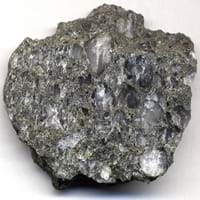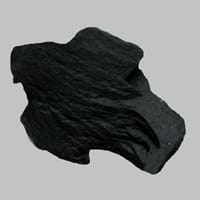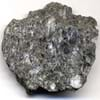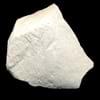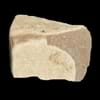Definition
Conglomerate is a sedimentary rock which forms from rounded gravel and boulder sized clasts which are cemented together in a matrix
Lignite is a soft brownish coal which shows traces of plants and is intermediate between bituminous coal and peat
Discoverer
Unknown
Unknown
Etymology
From Latin conglomeratus, to roll together, i.e. from com together + glomerare to gather into a ball, from glomus (genitive glomeris) a ball
From French, Latin lignum wood + -ite1
Class
Sedimentary Rocks
Sedimentary Rocks
Sub-Class
Durable Rock, Soft Rock
Durable Rock, Soft Rock
Group
Not Applicable
Not Applicable
Other Categories
Coarse Grained Rock, Opaque Rock
Coarse Grained Rock, Fine Grained Rock, Medium Grained Rock, Opaque Rock
Texture
Clastic
Amorphous, Glassy
Color
Beige, Black, Brown, Buff, Light to Dark Grey, Orange, Rust, White, Yellow
Black, Brown, Dark Brown, Grey, Light to Dark Grey
Durability
Durable
Durable
Appearance
Shiny and Rounded
Veined or Pebbled
Interior Uses
Decorative Aggregates, Floor Tiles, Homes
Not Yet Used
Exterior Uses
As Building Stone, As Facing Stone, Garden Decoration, Office Buildings, Roof Tiles
Not Yet Used
Other Architectural Uses
Curbing
Not Yet Used
Construction Industry
As Dimension Stone, Cement Manufacture, Construction Aggregate, for Road Aggregate, Roadstone
for Road Aggregate, Steel Production
Medical Industry
Not Yet Used
Not Yet Used
Antiquity Uses
Artifacts, Monuments, Sculpture, Small Figurines
Not Yet Used
Commercial Uses
Cemetery Markers, In aquifers, Tombstones
Electricity Generation
Types
Not Available
Xyloid Lignite or Fossil Wood and Compact Lignite or Perfect Lignite
Features
Clasts are smooth to touch, Is one of the oldest rock, Matrix variable
Generally rough to touch, Helps in production of Heat and Electricity, Used as fossil fuel
Archaeological Significance
Monuments
Used
Not Yet Used
Famous Monuments
Data Not Available
Not Applicable
Sculpture
Used
Not Yet Used
Famous Sculptures
Data Not Available
Not Applicable
Figurines
Used
Not Yet Used
Formation
Conglomerate forms where sediments consisting mainly of pebble and cobble-size clasts at least two millimeters in diameter starts accumulating.
Coal formation takes place due to accumulation of plant debris in a swamp environment. The Coal formation process continues, as peat turns into lignite brown or black coal at increasing heat and pressure.
Mineral Content
Clay, Sand, Silica, Silt
Not Available
Compound Content
NaCl, CaO
Carbon, Hydrogen, Nitrogen, Oxygen, Sulphur
Types of Metamorphism
Burial Metamorphism, Cataclastic Metamorphism, Regional Metamorphism
Not Applicable
Types of Weathering
Not Applicable
Biological Weathering, Chemical Weathering, Mechanical Weathering
Types of Erosion
Chemical Erosion, Coastal Erosion
Chemical Erosion, Water Erosion, Wind Erosion
Grain Size
Coarse Grained
Medium to Fine Coarse Grained
Fracture
Uneven
Conchoidal
Porosity
Highly Porous
Highly Porous
Luster
Dull
Dull to Vitreous to Submetallic
Cleavage
Non-Existent
Non-Existent
Toughness
Not Available
Not Available
Specific Gravity
2.86-2.88
1.1-1.4
Transparency
Opaque
Opaque
Density
1.7-2.3 g/cm3
800-801 g/cm3
Resistance
Heat Resistant
Heat Resistant
Deposits in Eastern Continents
Asia
China, India, Kazakhstan, Mongolia, Russia, Uzbekistan
Bangladesh, Burma, Cambodia, China, India, Indonesia, Kazakhstan, Malaysia, Mongolia, Pakistan, Turkey, Vietnam
Africa
Namibia, Nigeria, South Africa
Botswana, Kenya, Morocco, Mozambique, South Africa, Tanzania
Europe
Austria, Denmark, Germany, Great Britain, Netherlands, Norway, Poland, Sweden, Switzerland, United Kingdom
Belgium, Bulgaria, England, France, Germany, Greece, Hungary, Kosovo, Netherlands, Norway, Poland, Romania, Serbia, Slovakia, Slovenia, The Czech Republic, Ukraine, United Kingdom
Others
Greenland
Not Yet Found
Deposits in Western Continents
North America
Canada, USA
Canada, Mexico, USA
South America
Brazil
Brazil, Chile, Colombia, Venezuela
Deposits in Oceania Continent
Australia
New South Wales, New Zealand
New South Wales, Queensland, Victoria
All about Conglomerate and Lignite Properties
Know all about Conglomerate and Lignite properties here. All properties of rocks are important as they define the type of rock and its application. Conglomerate and Lignite belong to Sedimentary Rocks.Texture of Conglomerate is Clastic whereas that of Lignite is Amorphous, Glassy. Conglomerate appears Shiny and Rounded and Lignite appears Veined or Pebbled. The luster of Conglomerate is dull while that of Lignite is dull to vitreous to submetallic. Conglomerate is available in beige, black, brown, buff, light to dark grey, orange, rust, white, yellow colors whereas Lignite is available in black, brown, dark brown, grey, light to dark grey colors. The commercial uses of Conglomerate are cemetery markers, in aquifers, tombstones and that of Lignite are electricity generation.
